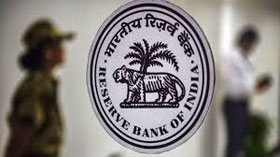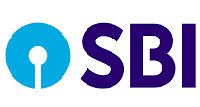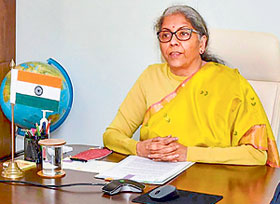May 2020 Economic Affairs
Sakshi Education
- Loans to MSMEs may get ‘risk-free’ tag
 The Reserve Bank of India (RBI) is likely to allow banks to assign zero risk weight for loans that will be extended to the micro, medium and small enterprises (MSMEs) under the Rs.20 lakh crore economic package announced by the government.
The Reserve Bank of India (RBI) is likely to allow banks to assign zero risk weight for loans that will be extended to the micro, medium and small enterprises (MSMEs) under the Rs.20 lakh crore economic package announced by the government.
BACKGROUND:
As part of the package, a Rs.3 lakh crore loan for the MSME sector was announced.
This will be guaranteed by the National Credit Guarantee Trustee Company Limited (NCGTC) in the form of a Guaranteed Emergency Credit Line (GECL) facility.
However, such loans would attract a risk weight of a minimum 20% since these don’t come with direct government guarantee.
The Finance Ministry had requested the central bank to make these loans risk free, following an interaction with banks.
This facility is similar to the loans that are guaranteed by the Credit Guarantee Fund Trust for Micro and Small Enterprises (CGTMSE).
After banks highlighted the issue with the government, the Finance Ministry asked the RBI to waive the requirement of assigning a risk weight to the loans.
- Financial Stability and Development Council (FSDC)
Union Minister for Finance & Corporate Affairs Smt. Nirmala Sitharaman chaired the 22nd Meeting of the Financial Stability and Development Council (FSDC).
As part of the meeting, the council reviewed the current global and domestic macro-economic situation, financial stability and vulnerabilities issues.
It also discussed the major issues likely to be faced by banks and other financial institutions as also regulatory and policy responses, Liquidity / Solvency of NBFCs/HFCs/MFIs and other related issues.
BACKGROUND
Financial Stability and Development Council (FSDC) is an apex-level body constituted by the government of India.
The idea to create such a super regulatory body was first mooted by the RaghuramRajan Committee in 2008.
Finally in 2010, the then Finance Minister of India, Pranab Mukherjee, decided to set up such an autonomous body dealing with macro prudential and financial regularities in the entire financial sector of India.
An apex-level FSDC is not a statutory body.
No funds are separately allocated to the council for undertaking its activities.
ROLES AND RESPONSIBILITIES
The roles and responsibilities of the Council include maintenance of:
Financial Stability
Financial Sector Development
Inter-Regulatory Coordination
Financial Literacy
Financial Inclusion
Macro prudential supervision of the economy including the functioning of large financial conglomerates
It is also responsible for Coordinating India’s international interface with financial sector bodies like the Financial Action Task Force (FATF), Financial Stability Board (FSB) and any such body as may be decided by the Finance Minister from time to time.
- Subsidiary General Ledger (SGL) | RBI fines UCO Bank
 Reserve Bank of India has imposed a penalty on UCO Bank for bouncing of Subsidiary General Ledger (SGL) forms.
Reserve Bank of India has imposed a penalty on UCO Bank for bouncing of Subsidiary General Ledger (SGL) forms.
What is this issue?
Public sector lender UCO Bank said the Reserve Bank has imposed a penalty of Rs.5 lakh for violating norms on government bond holding.
The Reserve Bank of India has imposed a penalty of Rs.5 lakh on UCO Bank for bouncing of Subsidiary General Ledger (SGL) forms.
Subsidiary General Ledger account
SGL account denotes Subsidiary General Ledger which is maintained with Reserve Bank of India for holding Government Securities and T-Bills in paperless form (or what in retail is called the demat account for G-secs!). The account is used for facilitating delivery and payment trades.
UCO Bank shares were trading 1.26% down at Rs.11.78 a piece on the BSE.
In exercise of powers conferred by Section 4 of Government Securities Act 2006, Reserve Bank of India had notified the conditions applicable for opening and maintaining of Subsidiary General Ledger (SGL) Accounts and Constituents’ Subsidiary General Ledger (CSGL).
- Defence and Mining Sectors | COVID-19 Stimulus Package
Recently, fourth tranche of COVID-19 stimulus economic package announced by PM focuses on reforms across industry, aviation and space.
Key details about fourth portion of COVID-19 Stimulus Package
The Highlights of the fourth trench of the Aatmanirbhar Bharat Abhiyan package includes steps to indigenise defence production by banning the import of some weapons and platforms while hiking foreign direct investment into the sector
This portion seemed to focus more on industry reforms than any sort of economic stimulus.
FM Nirmala Sitaraman also announced measures to introduce commercial mining in the coal sector, liberalise the mineral sector, ease airspace restrictions and encourage private involvement in space and atomic energy projects.
Package as a boost for growth
The COVID-19 Stimulus package was welcomed by most industry groups, although some in the space sector said the measures to boost private participation had to go beyond mere intent.
However, labour unions across the ideological spectrum, including the RSS-based Bharatiya Mazdoor Sangh, slammed the reform measures.
The only direct budgetary cost in this tranche was the Rs. 8,100 crore to be provided as a hiked 30% viability gap funding to boost private investment in social sector infrastructure.
In a bid to enhance self-reliance in defence production, the Centre would notify a list of weapons and platforms that could not be imported, and widen it every year as domestic capacities grew.
- Centre introduces several initiatives to boost Education Sector
Union Finance & Corporate Affairs Minister Nirmala Sitharaman has announced several initiatives to boost the education sector on 17 May in New Delhi. The move comes as the present pandemic situation has presented new challenges and several opportunities for the education system in the country.
The immediate set of initiatives includes:
1) A comprehensive initiative called PM e-VIDYA will be launched which unifies all efforts related to digital/online/on-air education. This will enable multi-mode access to education, and includes: DIKSHA (one nation-one digital platform), TV (one class-one channel), SWAYAM online courses in MOOCS format for school and higher education, IITPAL for IITJEE/NEET preparation.
2) The launch of the Manodarpan initiative to provide such support through a website, a toll-free helpline, national directory of counselors, interactive chat platform, etc. This initiative will benefit all school-going children in the country, along with their parents, teachers, and the community of stakeholders in school education.
3) GoI's move to expand e-learning in higher education by liberalizing open, distance, and online education regulatory framework.
4) GoI to prepare a new National Curriculum and Pedagogical Framework for school education, teacher education and early childhood stage to prepare students and future teachers as per global benchmarks. The aim is to promote critical thinking, creative and communication skills, along with experiential and joyful learning for the students focussing on learning outcomes.
5) Centre is to launch National Foundational Literacy and Numeracy Mission for ensuring that every child in the country necessarily attains foundational literacy and numeracy in Grade 3 by 2020.
- NABARD released Rs.20,500 crore to co-operative banks, RRBs
National Bank for Agriculture and Rural Development (NABARD) released Rs.20,500 crore to co-operative banks and regional rural banks (RRBs) for on-lending.
The disbursement to RRBs and Co-operative banks is the part of Rs.25,000 crore of special refinance plan which was approved by the Reserve Bank of India (RBI) to RRBs, Co-operative banks and Microfinance Institutions (MFIs).
Highlights:
Of the total, Rs.15,200 crore has been released to cooperative banks and Rs.5,300 crore to RRBs as special liquidity facilities in various states.
The funds to the co-operative banks and RRBs aims to ensure the availability of liquidity with the Banks to finance farmers for taking up pre-monsoon and Kharif 2020 operations.
Also, the banks have initiated a programme for Kisan credit cards and around 12 lakh new KCC cards have been issued by co-operative banks and RRBs in April 2020.
- Partial Credit Guarantee Scheme | Govt eases norms
As part of the extension of the Partial Credit Guarantee Scheme, the Union Cabinet has approved the Sovereign portfolio guarantee of up to 20% of first loss for purchase of Bonds or Commercial Papers (CPs) with a rating of AA and below issued by NBFCs/ MFCs/Micro Finance Institutions (MFIs) by Public Sector Banks (PSBs).
These commercial papers also includes unrated paper with original/ initial maturity of up to one year.
Background
The previously existing Partial Credit Guarantee Scheme was issued in December 2019.
It offered sovereign guarantee of up to 10% of first loss to PSBs for purchasing pooled assets worth rated BBB+ or above worth up to Rs. 1,00,000 crore, from financially sound NBFCs/ MFCs.
Following the COVID-19 outbreak along with lockdown of business activity, it became necessary to adopt additional measures to support NBFCs and HFCs.
On the liabilities side by providing a sovereign guarantee to cover purchase of Bonds/CPs issued by NBFCs/HFCs as well as MFIs which also play a critical role in extending credit to small borrowers;
On the assets side by modifying the existing PCGS to widen its coverage.
Key Highlights about new Partial Credit Guarantee Scheme
As part of the Rs 21 lakh crore special economic package amid the COVID-19 crisis, Finance Minister Nirmala Sitharaman last week announced Partial Credit Guarantee Scheme (PCGS) 2.0 worth Rs 45,000 crore for non banking financial companies (NBFCs) and micro finance institutions (MFIs).
As part of the recent modifications in PCGS, sovereign guarantee of up to 20% of first loss will be provided to state-owned banks for purchase of bonds or commercial papers of NBFCs, MFIs and housing finance companies (HFCs) having a credit rating of AA or below, including unrated paper with original maturity of up to one year.
The time period of the Scheme has also been extended by the Cabinet from June 30, 2020 to March 31, 2021 for purchase of pooled assets of the distressed entities.
- Cabinet approves Special Liquidity Scheme for NBFCs, HFCs to address their Liquidity Stress
The Union Cabinet chaired by Prime Minister Narendra Modi approved the proposal of the Ministry of Finance (MoF) to launch a new Special Liquidity Scheme for Non-Banking Financial Companies (NBFCs) and Housing Finance Companies (HFCs). The scheme aims to improve the liquidity position of the NBFCs/HFCs.
Proposed Scheme:
The Government has proposed a framework for addressing the liquidity constraints of NBFCs/HFCs through a Special Liquidity Scheme.
As per the scheme, a Special Purpose Vehicle (SPV) would be set up to manage a Stressed Asset Fund (SAF) whose special securities would be guaranteed by the Government of India (GoI) and purchased by the Reserve Bank of India (RBI) only.
The SPV will proceed with the sale of such securities to acquire short-term debt of NBFCs/HFCs.
The Scheme will be administered by the Department of Financial Services, MoF. GoI will issue the detailed guidelines.
A large public sector bank would set up an SPV to manage a stressed asset fund that would issue interest-bearing special securities guaranteed by the Government of India, to be purchased by RBI only.
The SPV would issue securities as per requirement subject to the total amount of securities outstanding not exceeding Rs.30,000 crore to be extended by the amount required as per the need.
The securities that are issued by the SPV would be purchased by RBI. And the proceeds would be used by the SPV to acquire the debt of at least investment grade of the short duration of eligible NBFCs/HFCs.
- RBI cuts repo rate to a record low by 40 bps
The Reserve Bank of India (RBI) cuts repo rate by 40 basis points (bps) to 4% from 4.4% on 22 May. The Central Bank also adjusted the reverse repo rate to 3.35% from 3.75%. The announcement was made by RBI Governor Shaktikanta Das.
Highlights:
The repo reduction marked the lowest repo rate or the key interest rate at which the RBI lends short-term funds to commercial banks. This is the reduction that has been recorded since 2000.
The reduction in the key interest rate will allow banks to reduce the Equated monthly installments (EMI) burden for their borrowers.
RBI also extended the loan moratorium, which allows banks to defer EMI payments by their customers, by another three months till August 2020.
Background:
On 27 March 2020, RBI slashed the benchmark interest rate by 75 bps and also announced a 3-month moratorium to be given by banks to provide relief to borrowers whose income has been hit due to the lockdown. RBI also introduced several steps to ease the pressure faced by borrowers, lenders, and other entities. RBI took more initiatives to deal with the COVID-19 pandemic.
- SBI reduces benchmark lending rate by 15 basis points
 State Bank of India (SBI) slashed the benchmark lending rate by 15 basis points (bps). With the newly announced cut, the MCLR (Marginal Cost of Funds based Lending Rate) reduced to 7.25%, from 7.40% with effect from 10 of May.
State Bank of India (SBI) slashed the benchmark lending rate by 15 basis points (bps). With the newly announced cut, the MCLR (Marginal Cost of Funds based Lending Rate) reduced to 7.25%, from 7.40% with effect from 10 of May.
SBI Wecare Deposit:
As a measure to safeguard the interests of senior citizens, the bank has introduced a new product 'SBI Wecare Deposit' in the retail term deposit segment.
Under the new product, an additional 30 bps premium will be payable for senior citizen's retail term deposits with Five Years and above tenure only. This scheme would be open until 30 September 2020.
SBI also slashed its interest rates on retail term deposits by 20 bps for up to 3 years tenure, effective from 12 of May.
- SC places cooperative banks under Sarfaesi Act on a par with other lenders
The Supreme Court (SC) brought cooperative banks under the Securitization and Reconstruction of Financial Assets and Enforcement of Security Act of 2002 (Sarfaesi Act) that empowers lenders to seize and sell defaulters’ assets.
Sarfaesi Act:
The move by the apex court aims to boost the cooperative banks that play a vital role in financial inclusion across large swathes of India.
The cooperative banks come under the category of banks as defined under Section 2(1)(c) of the Sarfaesi Act. Hence, the recovery procedures mentioned under the law will be applied to the cooperative banks as well.
Under Sarfaesi Act, the secured creditors can take possession of the assets of a borrower who fails to pay dues within 60 days of demanding repayment.
The judgment stated that cooperative banks were bound by the provisions of the Banking Regulation Act, 1949, and all the other legislation applicable to banks under the RBI Act. Now, the cooperative banks will have to comply with these rules.
Cooperative banks will now be involved in banking activities that are covered u/s 5(c) & 56(a) of the Banking Regulation Act.
As per the Reserve Bank of India (RBI) report, as of 31 March 2018, there are 1,551 urban cooperative banks (UCBs), and 96,612 rural cooperative banks (as on 31 March 2017). The rural cooperative banks account for 65.8% of the total asset size of all cooperative banks.
- IMPS transfers in April dive to 2-year low due to lockdown
Data from the National Payments Corporation of India (NPCI) stated that April Immediate Payment System (IMPS) numbers have reduced to a two-year low. The dive in the retail interbank transfers is due to the COVID-19 lockdown.
Highlights:
Transactions using the IMPS platform in April stood at 12.2 crore, while 24.7 crore transactions were done in February 2020.
The platform is used mostly by migrant labour and small businesses.
In the case of Unified Payment Interface (UPI), an app-based payment, there has been a significant drop as well from 132 crore in February to less than 100 crore in April.
As the limit of IMPS is Rs.2 lakh, it is mostly used by small businesses.
More than the limit, one has to use RTGS. Hence, larger corporates and mid-cap companies prefer RTGS for bulk payments such as salary credits to employees and vendor payment.
- Finance Minister launched INR-USD Futures and Options contracts in the International Exchanges at GIFT-IFSC
 Union Minister for Finance and Corporate Affairs Nirmala Sitaraman launched INR-USD Futures and Options contracts on the two International Exchanges, namely BSE's India INX and NSE's NSE-IFSC, at GIFT International Financial Services Centre (IFSC) at Gandhinagar through video conference on 8 May.
Union Minister for Finance and Corporate Affairs Nirmala Sitaraman launched INR-USD Futures and Options contracts on the two International Exchanges, namely BSE's India INX and NSE's NSE-IFSC, at GIFT International Financial Services Centre (IFSC) at Gandhinagar through video conference on 8 May.
Background:
The launch of INR-USD contracts at the exchanges in GIFT-IFSC is a step in bringing the international financial centres to India.
Earlier, the significant market share in financial services related to India has moved to other international financial centres.
The move will be available 22 hours across all time zones for all global participants from GIFT IFSC.
It is expected that trading of INR-USD contracts will bring volumes to India.
The move would also bring larger global participation in India through IFSC and connect India's IFSC globally.
Published date : 22 May 2020 12:48PM


















